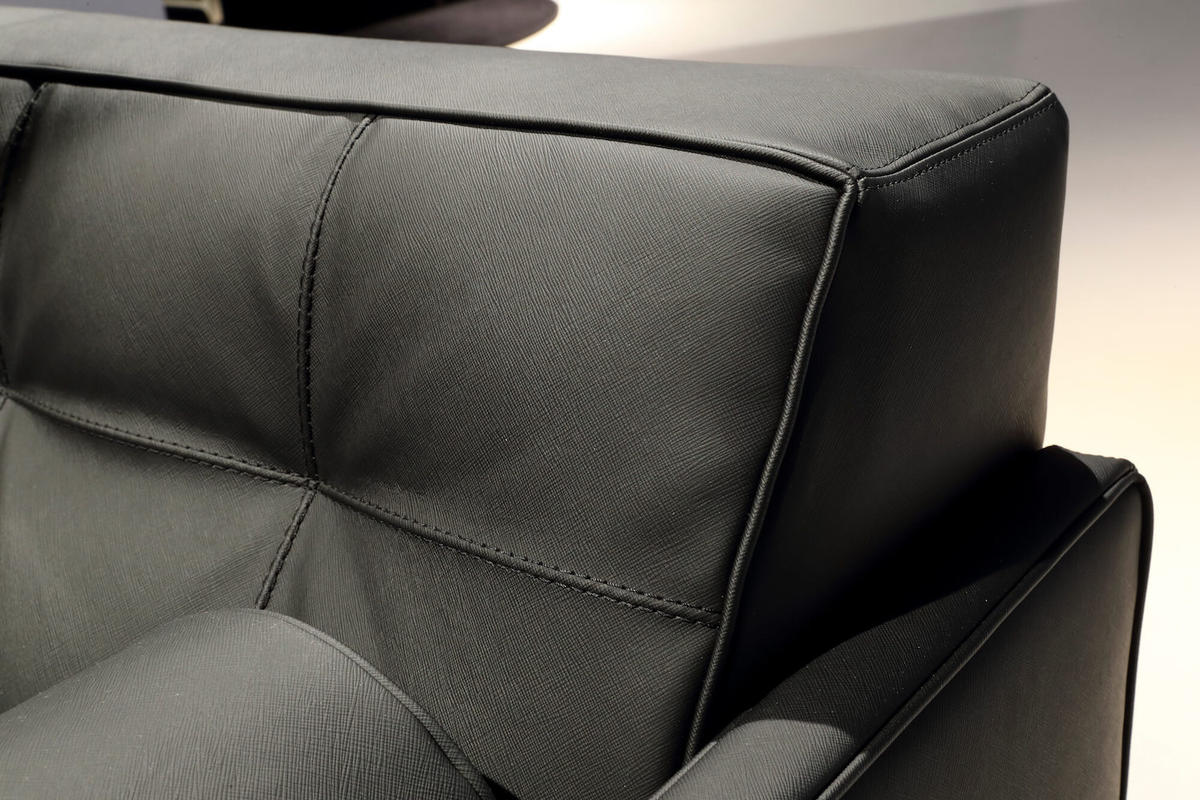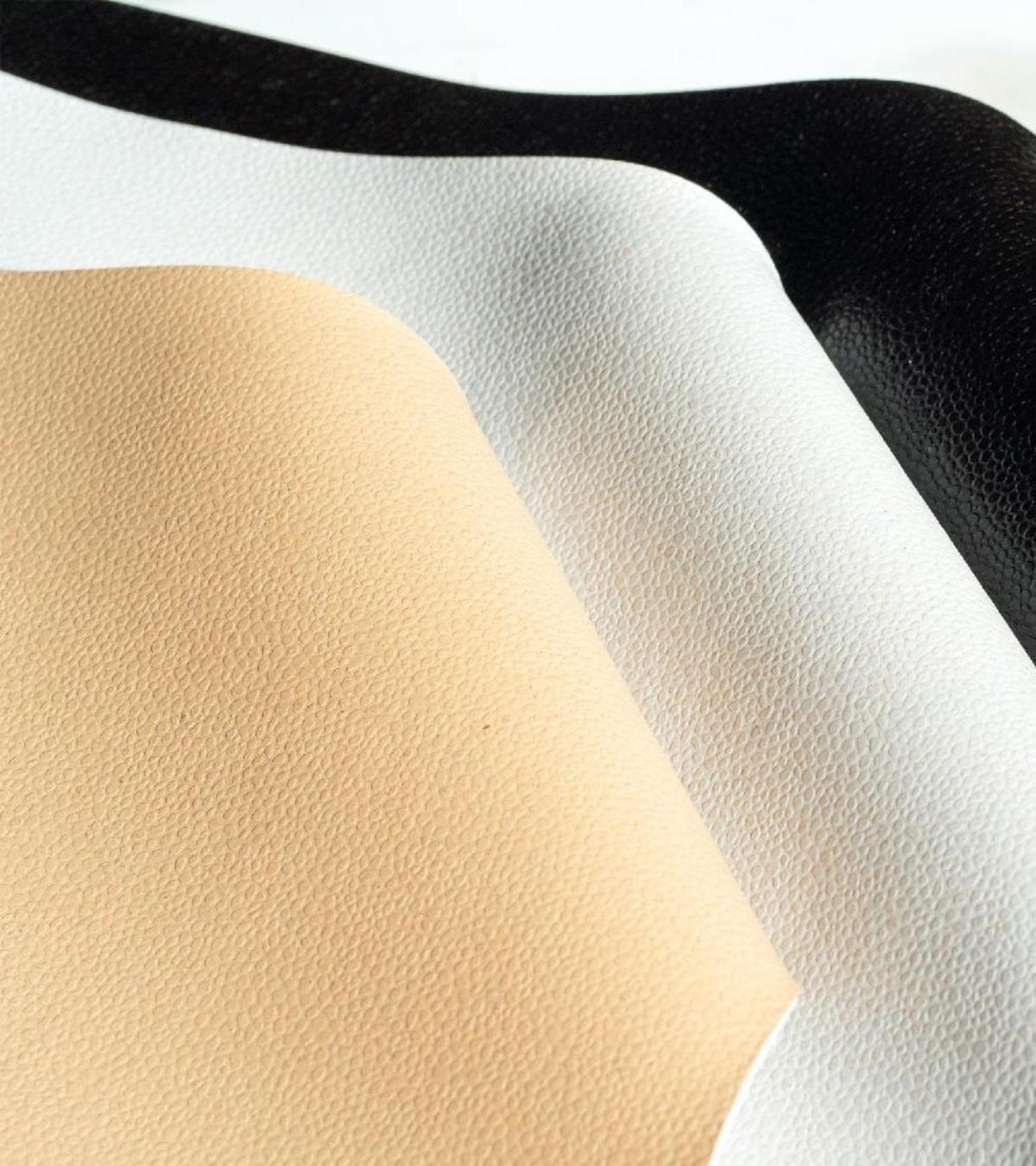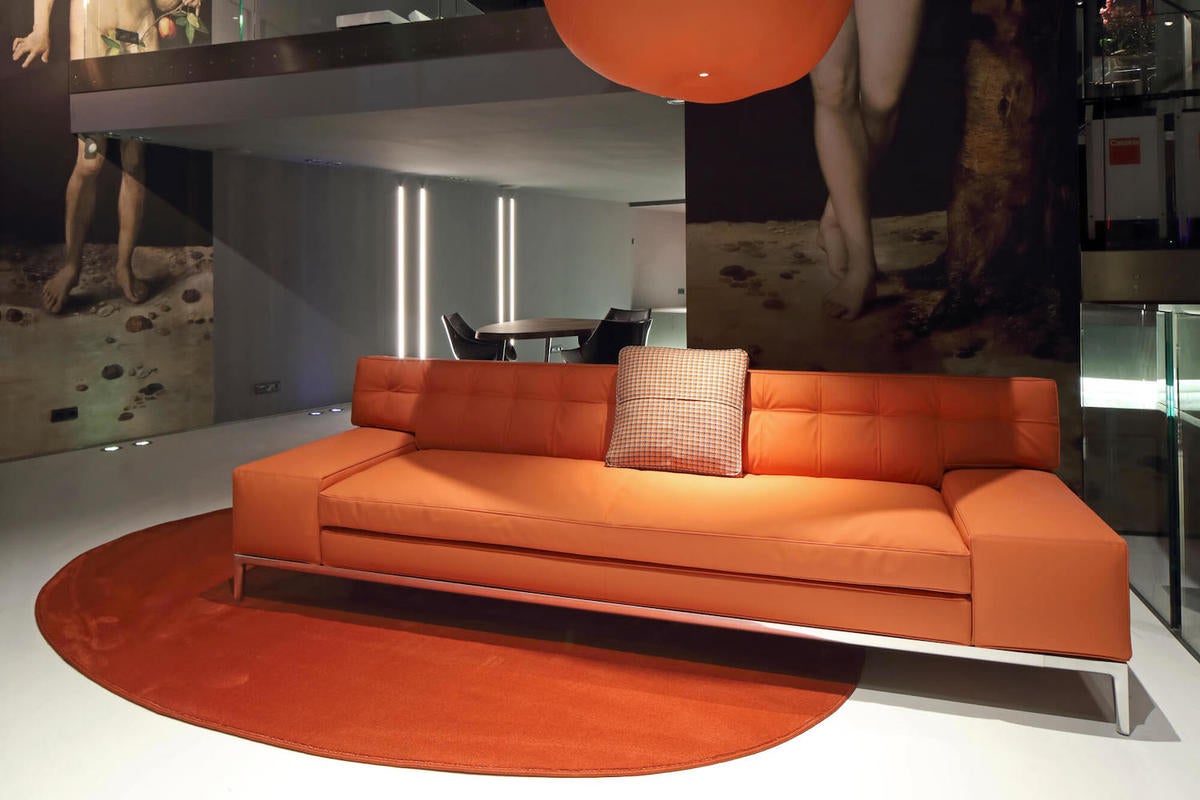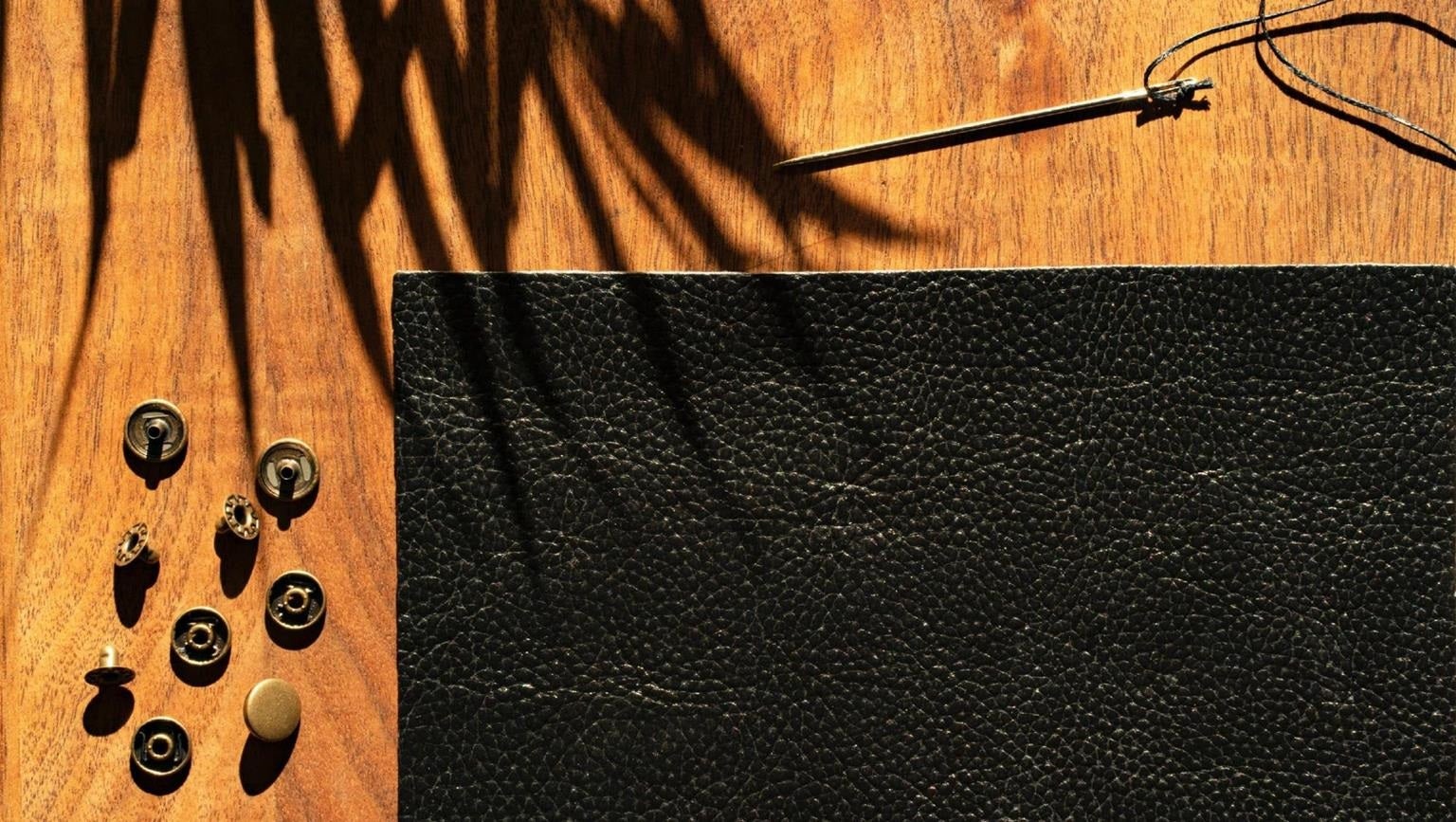Plant- and fungi-based leather alternatives are a hot commodity in the fashion world, which means it’s only a matter of time before they make their way into the interiors industry. While vegan design enthusiasts have long endorsed the benefits of bioleather, it’s only recently that biomaterial innovation companies began focusing their efforts on upholstery.
The race for fashion’s freshest leather alternative first heated up back in March, when Hermès announced it had tapped biotech brand MycoWorks to create a mycelium-based travel bag that, naturally, already has a waitlist. Days later, Stella McCartney unveiled a line of garments made from lab-grown Mylo mushroom leather, and suddenly, fungi-derived leathers were the material of choice for fashionistas around the globe.
Some of the same companies that are helping fashion brands capitalize on this trend are looking to get into home design. “We actively work with luxury fashion groups and the brands they incorporate,” says Maurizio Montalti, founder of Amsterdam-based creative studio Officina Corpuscoli—who was commissioned by New York’s Museum of Modern Art to collaborate with British footwear designer Liz Ciokajlo of OurOwnsKin on a pair of mycelium shoes called MarsBoots. “However, as we continue to uncover the possibilities of biotextiles, we’re working to position ourselves in interiors.”

While most faux leathers are derived from plastics (typically a polyester base with a PVC or polyurethane finish), the latest craze centers on biomaterials, particularly ones produced from living cells and organisms that are grown in a lab and then chemically treated to create a durable, leatherlike substance. The most popular of the biofabricated bunch—which includes everything from cacti-based fabrics to materials derived from pineapples—is mycelium, which is composed of the root structure of mushrooms. “While they’re not entirely chemical-free, bioleather alternatives are still much safer—and kinder—than the real deal,” interior designer and VeganDesign.org founder Deborah DiMare tells Business of Home.
The appeal of leather alternatives sits at the intersection of myriad ethical and environmental concerns about the leather production process, from animal rights and workers’ rights to increased awareness about the livestock industry’s impact on global warming. (Cattle are the largest agricultural source of greenhouse gases worldwide.) While leather companies have long billed their goods as a byproduct of meat production, designers like DiMare—who specializes in vegan and ‘cruelty-free’ interiors—argue that today, “skin holds more value than meat.” The fact that bioleathers also bypass the chemical-intensive tanning process offers additional benefits. “Forget the ethics—there are over 250 chemicals used in the tanning process, and less than one percent of them have been tested for safety,” says DiMare.

It’s no surprise, then, that textile manufacturers have been scrambling to create a better leather substitute. “Faux leather had a glow-up in the 2010s when the category got rebranded to ‘vegan leather,’” says Luke Haverhals, CEO and founder of Illinois-based biotextile company Natural Fiber Welding. “But no matter the name—‘pleather’ or ‘vegan leather’—plastic is neither a sustainable nor an animal-friendly alternative to conventional leather.”
Bioleathers replace plastic- and petroleum-derived leather alternatives with ones composed of natural polymers and plant- or fungi-based materials that are widely available and easier on the ecosystem. “Plants are inexhaustible in their abundance and ability to meet the needs of the world’s population in a sustainable, circular way that reduces carbon dioxide emissions and material waste,” says Haverhals. “More new plant matter grows in an average day on Earth than the total tonnage of all the petroleum-derived products produced by people in a year, and more importantly, plants can be reused and recycled into a circular system that does not start with energy-intensive production and end with products in landfills.”
However, bioleather isn’t perfect. While it takes less time and fewer resources to grow materials derived from plants and fungi, DiMare says some toxic chemicals are usually necessary in the postproduction process. “There’s a lot of greenwashing with biomaterials,” she explains. “Although they are clean and ethical in their raw stage, in order to be used for clothing and furniture, most plant-based materials are treated with planet-destroying petrochemicals.”
And for all the talk of replacing leather, it’s worth noting that some leather manufacturers are taking strategic steps toward more sustainable production processes. According to the Leather and Hide Council of America, a majority of the leather goods sold in the United States are imported from Asia. However, certain luxury leather companies, including Edelman Leather, only source raw materials from Europe, where farming and production protocols are much stricter. “When you raise the quality of life for the animal, it produces a superior product,” says Mark Skerik, president of Edelman Leather. “A great leather can last for generations, which makes it more sustainable in the long run.”

As the search for a truly ethical and ecologically sound leather substitute continues to heat up, DiMare says bio-based materials provide consumers with an attractive, long-lasting option in the interim. “To date, biotextiles are the best alternative to real leather,” she says. “They’re better for animals, workers, public health and the environment.”
Today’s trendiest interior bioleathers include Italian company Frumat’s Apple Ten Lork, an apple-based leather alternative that Philippe Starck employed in a 16-piece collection for Cassina, and Natural Fiber Welding’s Mirum, a fully recyclable material made of rice hulls and coconut husks and engineered without petrochemicals. BMW and Porsche have recently used the latter for luxury car upholstery and trims. “Footwear and automotive alone account for about two-thirds of the global leather market, according to the International Council of Tanners,” says Haverhals. “Not only is Mirum scalable, it is endlessly tunable and customizable—a designer’s dream.”
Homepage image: BMW recently invested in Natural Fiber Welding’s all-natural, fully recyable leather alternative, Mirum.| Courtesy of BMW Group



























